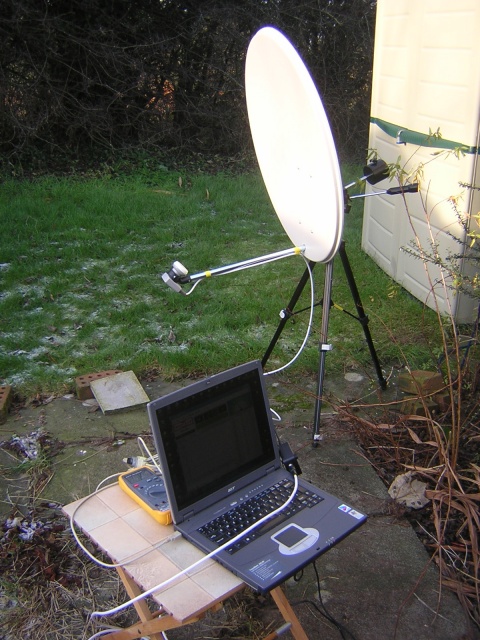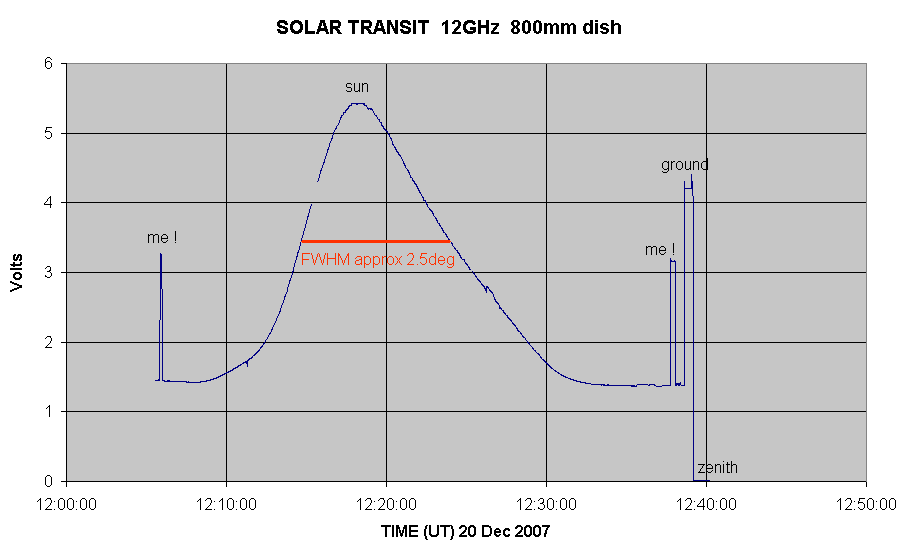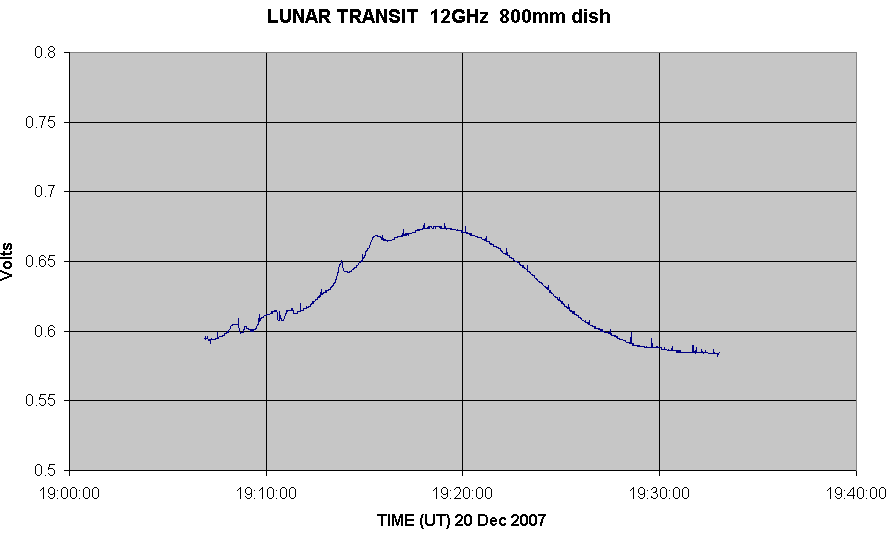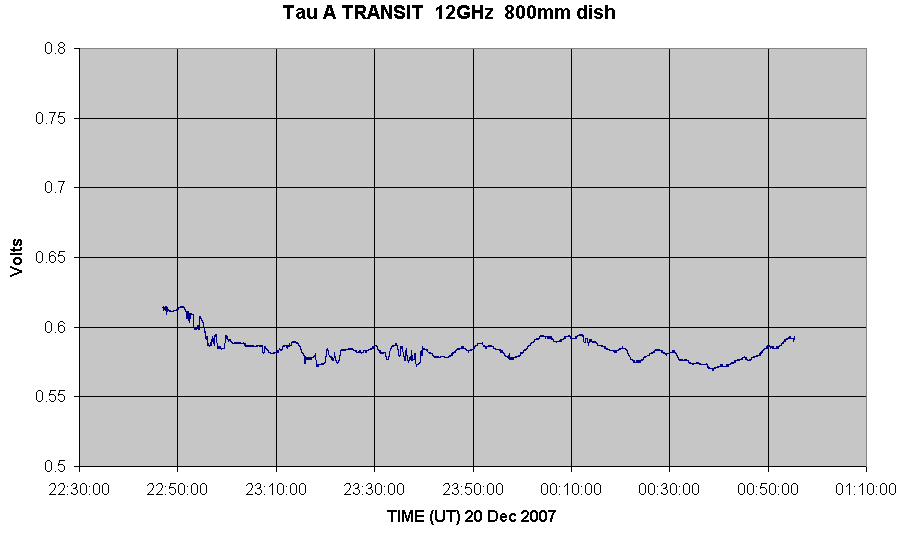
RADIO
ASTRONOMY
EXPERIMENTS
WITH A Ku BAND (12GHz) SATELLITE SETUP

The equipment consists of a Ku band (approx 12GHz) analogue satellite TV setup with an
offset fed 750x850mm elliptical dish. The dish is
FIRST LIGHT
The setup proved easily capable of detecting the different levels of radio flux from the frozen ground at approximately 273 deg K and the cold sky at the zenith (~5 deg K ?). A person standing in the beam 2m away from the dish also produced a good signal (this signal was less than the ground signal as the dish was not fully illuminated) The satellite finder bandwidth is very wide (over 1GHz) which means that any Ku band transmissions in the beam will be picked up. Geostationary satellites are easily avoided by aiming the dish at a vacant part of the sky. Moving sources (eg other satellites, planes) pose a problem however as do trees, rooftops, overhead wires etc which all produce a thermal signal.
Solar Transit
The dish was aimed at the elevation of the sun and a few degrees west of its
position close to the meridian. (The winter sun was so low that the dish was
partly illuminated by the ground, giving a background reading above that of the
cold sky). The signal was recorded as the Sun drifted through the beam.

The sun produced a very strong signal with a beam width (resolution) of 2.5 degrees (FWHM) This is about right for the aperture and wavelength (~50000x longer than visible light) An optical telescope of the same aperture would have a resolution of less than 1 arc second. Since the sun is 0.5 degrees diameter, the radio “image” is very fuzzy!
Lunar transit
The same technique was used later in the day to record a transit of the moon. Note that the lunar signal at microwave wavelengths is mainly due to the thermal signal from the moon’s surface layer with only a small contribution from the reflected sunlight. The new moon can easily be seen by a radio telescope !

Although the signal was much lower than for the Sun (perhaps just 2-3%), the Moon was easily detectable above the noise. There was some variablity in the signal during the early part of the transit (cause unknown) but the later transit was very low noise apart from the occasional short transient.
Tau A (M1, The Crab Nebula)
The Crab Nebula supernova remnant is one of the brightest radio sources in the sky (designated Tau A). An attempt was made to detect it using the transit technique.

This chart is plotted to the same scale as the lunar transit. Considerable variability in the signal is evident throughout the run, (higher than for the lunar transit) and it is unclear if Tau A was detected. Repeat runs would be needed to determine if any of this signal is from non terrestrial sources.